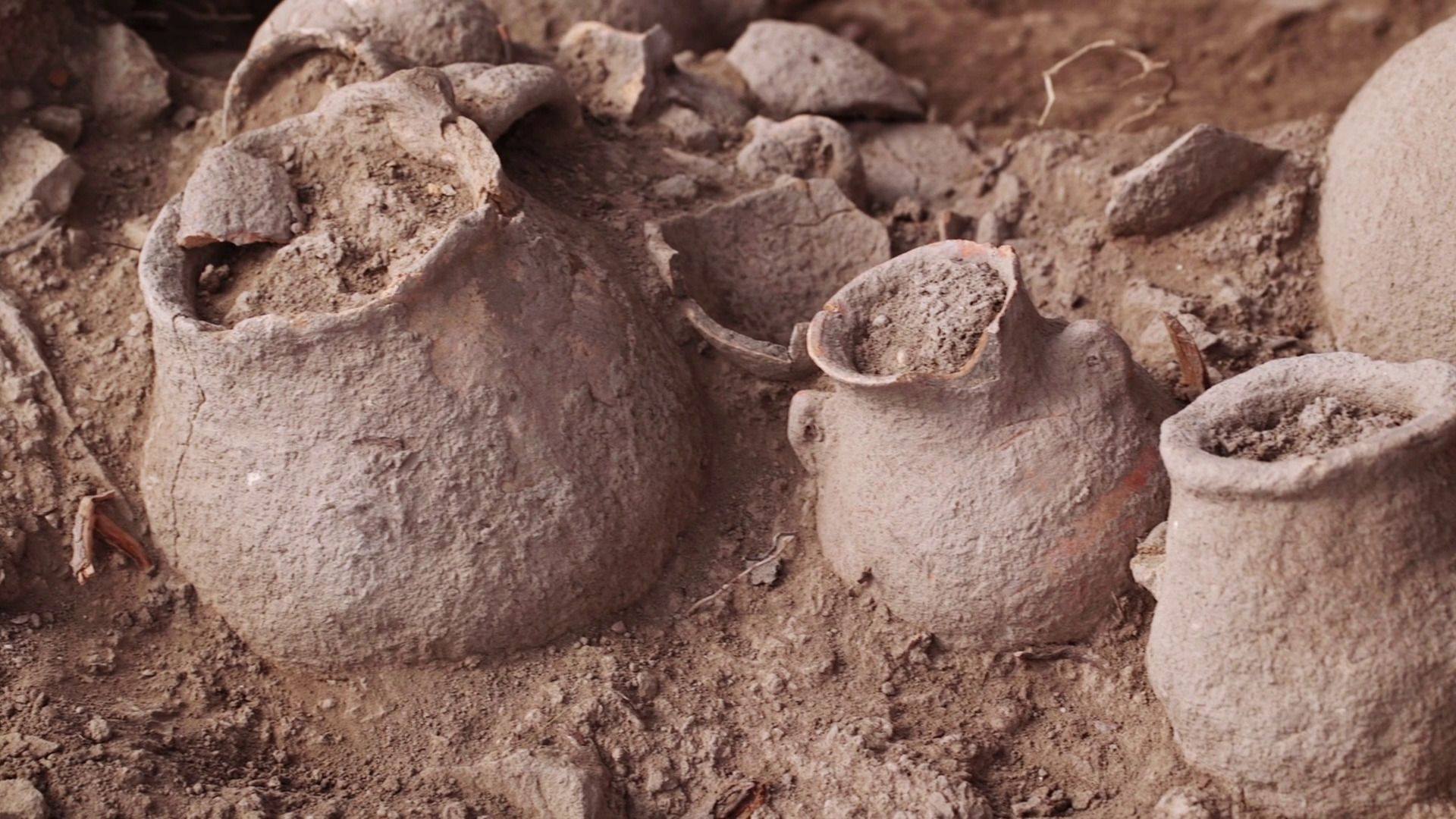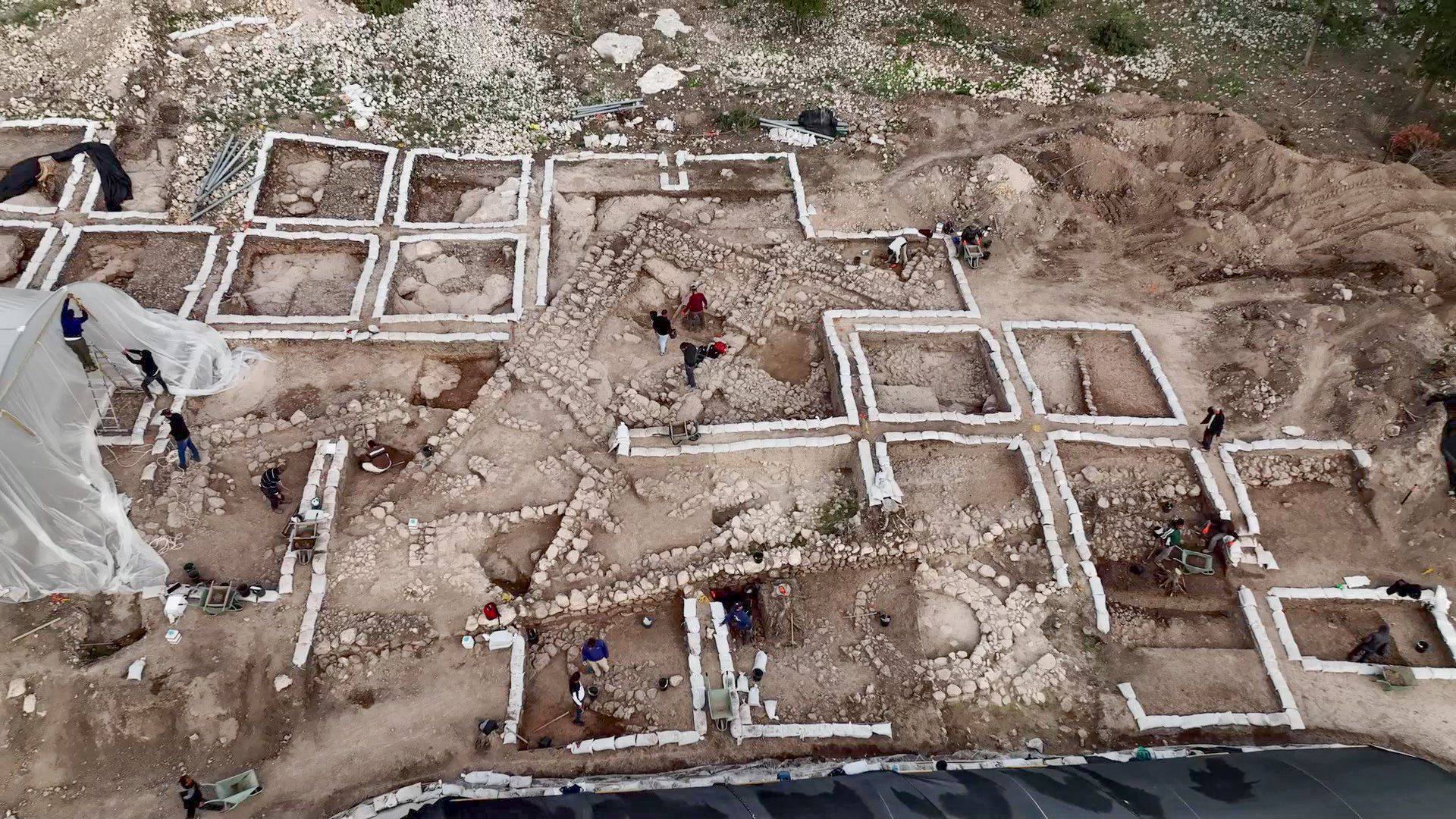Credit: Israel Antiquities Authority
Archaeologists discovered a 5,000-year-old settlement that provides insight into the beginning of the urbanization process in present-day Israel, during excavations by the Antiquities Authority near Beit Shemesh, at the site of Hurvat Husham. The excavations were conducted in preparation for the expansion of the western industrial zone of the city.
The excavation revealed, among other things, a public building that may have been used for ritual activities, and in it a room with approximately 40 vessels preserved intact. Among them were many small vessels, the size of which suggests that they were not for domestic use, but had primarily a symbolic purpose.
The vessels were preserved in their original place, as they were placed by the inhabitants of the Early Bronze Age IB (late 4th millennium BCE). According to Ariel Shatil, Maayan Hemed and Danny Benayoun, excavation directors at the Israel Antiquities Authority, it is interesting that many of these pots and jars were placed here shortly before the site was abandoned forever. One can literally imagine the people who deposited these pieces and left them here. It is not known what happened in this room afterwards, but there are signs of burning and vessels falling on top of each other. Laboratory examination of the ancient contents of the vessels using different scientific methods will shed more light on the site: we will be able to tell whether they contained oil, water, wheat, or perhaps were specifically intended for exotic oils or other substances.

Credit: Israel Antiquities Authority
The size of this structure we have discovered, its wide walls, the benches inside, and other variables indicate that it is an important and exceptional structure with a public function, perhaps a temple, say the excavators. We know of almost no public buildings in Israel from this very early period or earlier, the researchers say. Comparison with the few such buildings known suggests that this is probably one of the oldest temples discovered in the Judean lowlands.
Near the public building, a complex with large upright stones arranged in rows was discovered. The upright stones were erected even before this closed public building was built. Their presence promises to provide insight into the sociopolitical process involved in the founding of the cultic service at Hurvat Husham. It appears that there was originally an open area of cultic activity for the general public that was later transformed into an enclosed compound with more controlled access for ritual activities. This development process at the site, along with other processes, attests to an increase in social complexity, explains Dr. Yitzhak Paz, an expert on the Early Bronze Age at the Israel Antiquities Authority.
The ancient settlement at Hurvat Husham was first discovered in 2021, in excavations led by Marion Zindel and Natan Ben-Ari on behalf of the Israel Antiquities Authority. Over the past three and a half years, the excavation was expanded, making it possible to clarify the extent of the site and its importance for understanding the origins of the urbanization process in the area.
The Early Bronze Age is one of the most complex periods in Israel's history, during which drastic changes occurred in the lifestyle and worldview of the region's inhabitants. The number of inhabitants increased dramatically. For the first time, social complexity was created, as well as the political structure of a hierarchical society. At the height of this period, the acceleration of the phenomenon of urbanization is evident, and public monumental construction can already be observed: fortifications, religious and government buildings, specialization and standardization in various industries, and more intensive trade with neighboring regions such as Egypt, Syria, Anatolia and Mesopotamia.
The site discovered at Hurvat Husham is exceptional not only for its size, but because it reveals some of the earliest features of the transition from village to urban life, say the excavators. The site shows that the first steps towards the development of an urban society in the Judean lowlands were already being taken around 5,000 years ago. A few generations later, we already see large cities in the area, surrounded by walls, with palaces and other buildings, such as at the site of Tel Yarmuth, which is within the viewing range of this site.
Sources: Israel Antiquities Authority and Magazine Cultural Independente


































